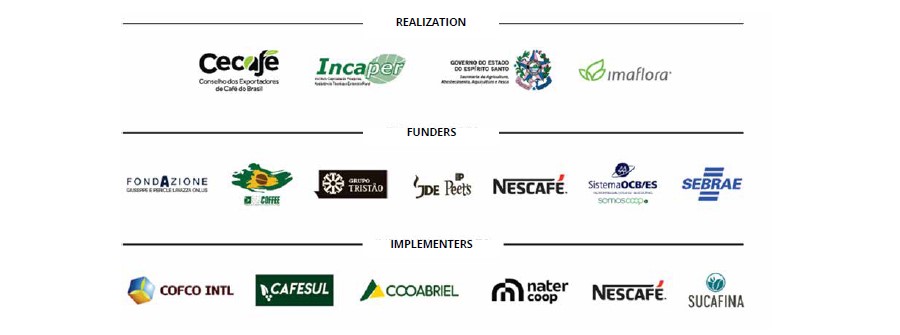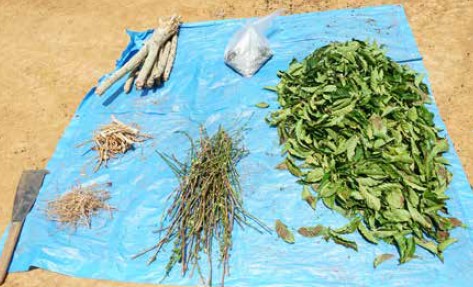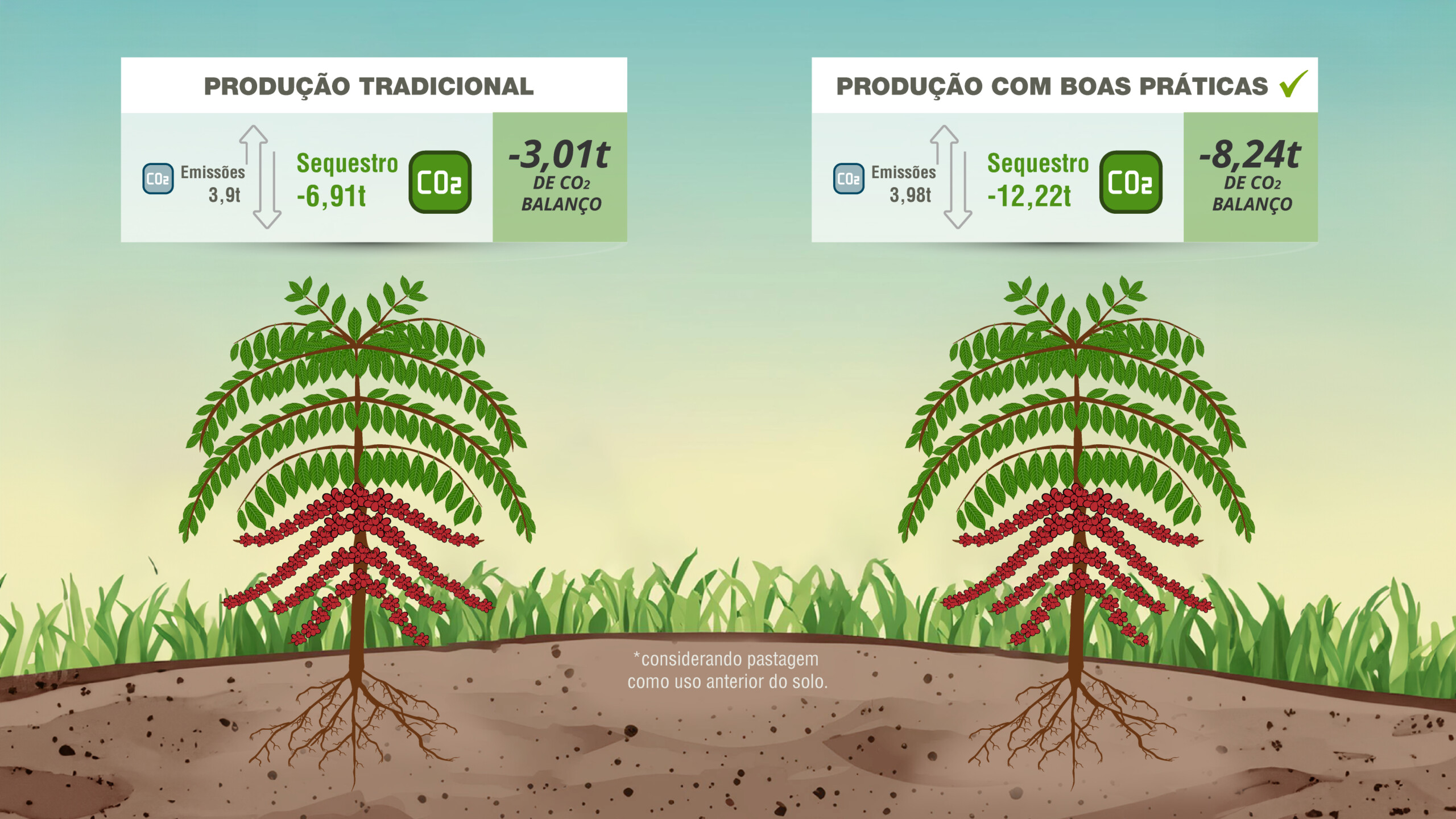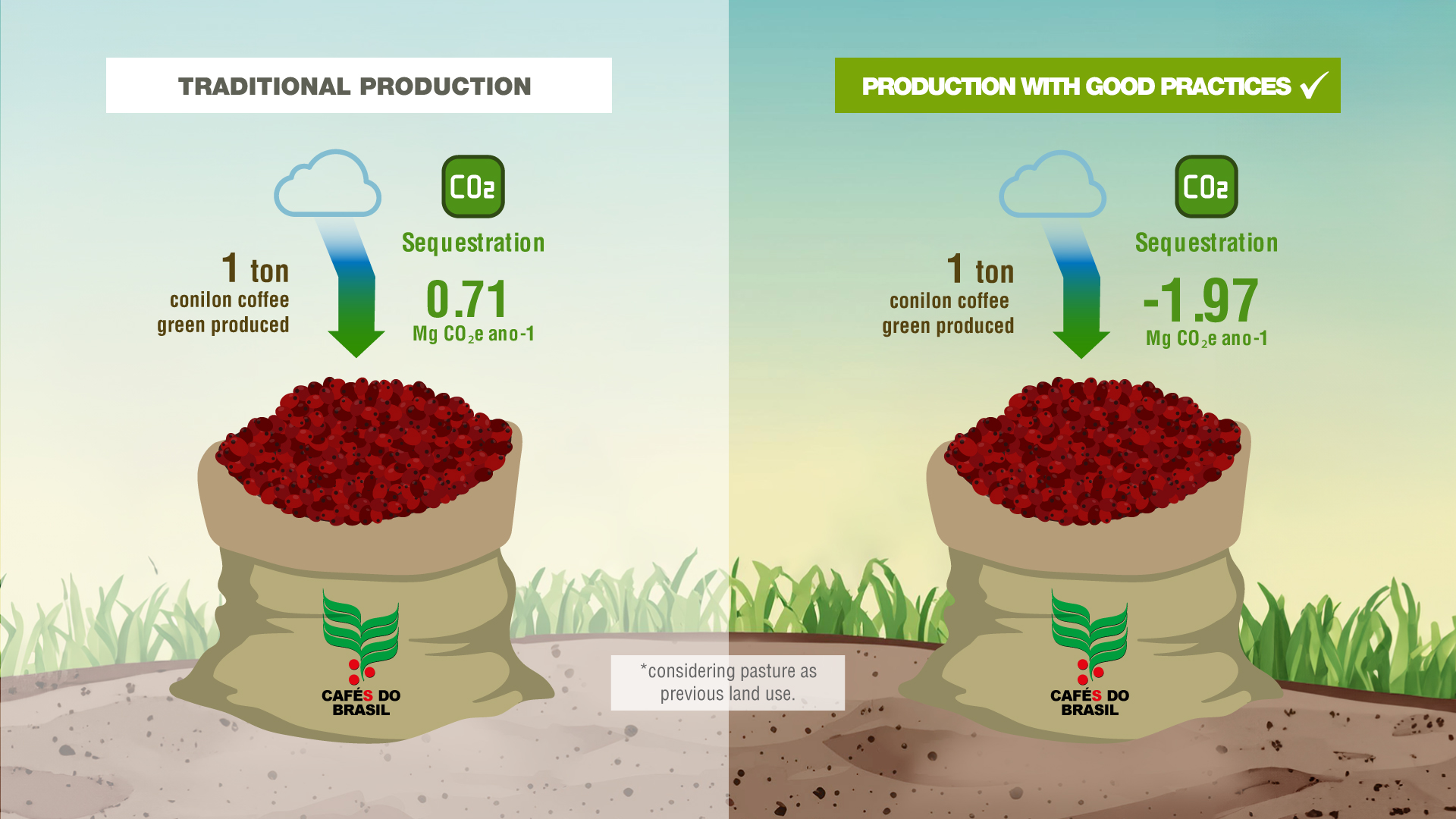Cecafé’s carbon program is a testament to the ability of Brazilian coffee farming to meet the growing global demand for sustainable coffee.



The damage caused by climate change has been real in recent years, as extreme weather events have increased in frequency and intensity in various regions of the planet.
According to recent debates, global greenhouse gas (GHG) emissions are increasing every year, driven by the growth of China, India, and other developing countries. Meanwhile, global temperatures continue to rise, reaching unprecedented levels.
According to the World Meteorological Organization (WMO) and the European Union’s (EU) Copernicus Climate Change Service, 2023 was the warmest year on record compared to the average the average of the pre-industrial period, from 1850 to 1900, with an increase of 0.17°C compared to the previous record, in 2016. Compared to pre-industrial levels, the average was 1.48°C higher, and this was the first year in which every day exceeded 1°C.
Cecafé, in close collaboration with its partners and in constructive cooperation with SEAG/ES’s Sustainable Development Program for Coffee in Espírito Santo, has completed another phase of its Carbon Program, now focused on Conilon coffee growing, with the aim of demonstrating that Brazilian coffee is part of the solution to this global problem.
In this phase, research on “Greenhouse Gas Balance of Conilon Coffee in Espirito Santo” was carried out with the technical and scientific support from the Institute for Forest and Agricultural Management and Certification (Imaflora), Geocarbon, and Professor Carlos Eduardo Cerri, of the Luiz de Queiroz College of Agriculture (Esalq) at University of São Paulo (USP).
The study had two objectives: (i) to calculate both the carbon balance of traditional Conilon coffee production and the one that adopts more sustainable practices, considering pasture as the previous land use; and (ii) to estimate the additionality generated by the change in agricultural practices, from traditional Conilon coffee production to one that adopts more conservationist practices – such as the return of postharvest residues to the soil, the maintenance of pruning residues in the crop, the covering of the soil between coffee rows during the initial phase of the crop, and the preference for organic or organomineral fertilizers.
The baseline land use decision took into account global discussions on adapting to and mitigating the effects of climate change, new trade rules to combat deforestation, and ensuring food security, and recognized the potential of Brazilian agriculture to meet growing demand for food, fiber, and beverages, including coffee, without expanding the agricultural frontier into areas of native vegetation.

To quantify carbon sequestration, 22 soil samples (up to one meter deep) were collected from the northern and southern producing regions of the State of Espírito Santo, according to the methodology accepted by the IPCC. The soil samples had the same clay concentration and were representative of traditional and sustainable farming practices for Conilon coffee and pasture areas.

At the same time, data on the inputs and operations related to the production of Conilon coffee (traditional and sustainable) were collected from 25 coffee farms in order to calculate greenhouse gas emissions using the GHG Protocol.
The study concludes that, in all the scenarios analyzed, Conilon coffee grown in Espírito Santo has a negative carbon balance, meaning that it sequesters more greenhouse gases than it emits during its production process.
In the first scenario – conversion of land use from pasture to coffee -, the carbon balance of traditional production decreases 3.01 tons of CO2 equivalent per hectare per year, taking into account the sequestration of 6.91 tCO2eq/ha/year retained in the soil, minus the 3.9 tCO2eq/ha/year emitted through the use of nitrogen fertilizers, pruning residues, burning of fossil fuels and other emission sources that are part of coffee production.
Carbon additionality increases when considering the change in land use from pasture to Conilon production with the adoption of sustainable practices. These coffee farms show a reduction in carbon balance of 8.24 tCO2eq/ha/year, taking into account the sequestration of 12.22 tCO2eq/ha/year retained in the soil and a total of 3.98 tCO2eq/ha/year emitted during the farming process.
The carbon balance per ton of coffee produced during the year was also calculated for both types of practices, traditional and sustainable. In conclusion, these coffee farms and their respective practices are responsible for the removal of 0.71 and 1.97 MgCO2eq per ton of coffee produced per year.

In the second scenario – changing practices from traditional coffee farming to the adoption of more conservationist practices -, the Conilon from Espírito Santo also has a negative carbon balance, removing 1.36 tons of CO2eq per hectare per year.
The results show that Conilon coffee farming in Espírito Santo is an important asset for mitigating climate change. High emissions of greenhouse gases are one of the main causes of global warming, and the adoption of good agricultural practices in coffee farming seems to be a relevant strategy to remove some of these gases from the atmosphere.

We must also highlight an important additional environmental value that does not appear in the carbon balance: the preservation of native vegetation on coffee farms. The rural properties analyzed in the study have an average of 338.67 tons of CO2eq stored in Permanent Preservation Areas (PPAs) and Legal Reserves (LRs), confirming that coffee farming and environmental conservation go hand in hand in Brazil.
The additional benefits calculated in the carbon balances indicate a huge potential for linking coffee production in Espirito Santo with green investments, through the various financing instruments available for expanding the adoption of sustainable crop practices and restoring degraded pasture lands. According to the Government of Espírito Santo, there is potential for investments in coffee plantations to recover approximately 60% of Espírito Santo’s pastureland, which suffers from moderate to severe degradation.
The results of this phase of Cecafé’s carbon agenda once again demonstrate Brazil’s ability to meet the growing demand from global industry and consumers for sustainable coffee and show that the adoption of good practices is essential to mitigate extreme climate impacts and reduce the economic impact on farmers’ incomes.
To learn more about the research, visit https://www.cecafe.com.br/.
Marcos Matos
CECAFÉ CEO
Silvia Pizzol
CECAFÉ Sustainability Manager



Leave A Comment